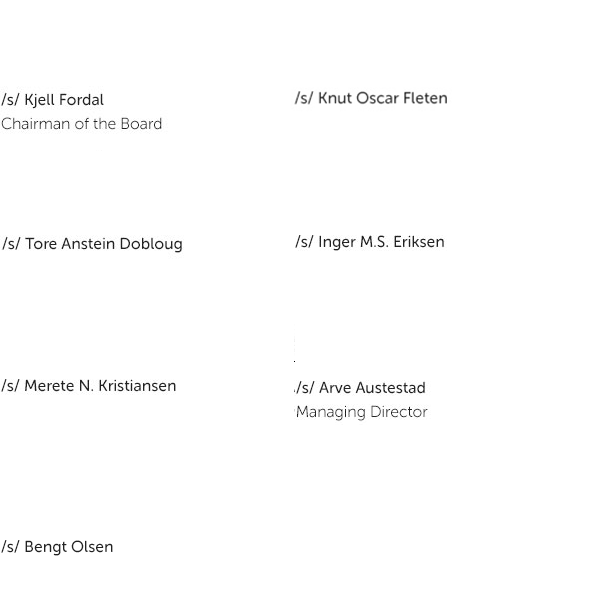Boligkreditt Annual Report 2019
Statement of the board of directors
SpareBank 1 Boligkreditt’s purpose
SpareBank 1 Boligkreditt AS (‘Boligkreditt’, ‘SpaBol’, or ‘The Company’) is a credit institution licensed by the Norwegian Financial Supervisory Authority (Finanstilsynet) and is operated according to the legislation for covered bond issuers in Norway which is included in the Financial Institutions Act (“Finansforetaksloven”) chapter 11, section II and the detailed regulations thereof.
The purpose of the Company is solely to provide funding for its owner banks by buying qualifying residential mortgage loans from them with a loan-to-value (“LTV”) of up to 75 per cent and financing these through the issuance of covered bonds1.
The Company, which is based in Stavanger, is owned by banks which are all members of the SpareBank 1 Alliance. A comprehensive agreement with each of these banks regulates the mortgage purchasing process and the obligations which the banks owe the Company and its mortgage customers (“Transfer and Servicing Agreement”). The Company pays out the interest margin earned to its owner banks, with deductions for estimated operating and financial expenses. This margin is accounted for as commissions to owner banks.
The Company’s issuances of covered bonds mainly take place under the EUR 25,000,000,000 Global Medium Term Covered Note Programme (GMTCN Programme). This Programme was updated on April 10, 2019 and is available on the Company's home page: https://spabol.sparebank1.no.
The Company has procured the services of Moody’s Ratings Service to evaluate the credit quality of the issuances under the GMTCN Programme. The covered bonds rating is Aaa.
1 The limit for instalment mortgages is 75 per cent, while mortgages which have no scheduled repayment structure are limited to 60 per cent (these are a smaller portion of the mortgage portfolio). All mortgages above 60 per cent must be amortizing by at least 2.5 per cent per year according to current mortgage market regulations.
2 The source is the balance sheet figures as of 31 December 2019 and the cover pool asset liability test for overcollateralization (see notes to the financial statements). Norwegian covered bond issuers are required by law to group derivatives as part of cover pool assets, and not together with the issued covered bonds that they hedge. This is reflected in the chart and figures above. This may not be identical to the Moodys overcollateralization calculation, which in an economic sense provides a better illustration by grouping derivatives with the bonds they hedge.
The amount of liquid assets varies over time and the variation is solely a result of the Issuer’s liquidity risk management (and regulatory requirements), whereby upcoming redemptions are refinanced prior to the maturity of outstanding bonds (minimum 180 days) with bond proceeds invested as liquid assets. Liquid assets are covered bonds with a triple-A rating, SSA or government bonds with a triple-A rating or short term cash deposits and repos (please see the cover pool statistical reports for details on the composition of liquid assets).
Derivatives are used solely to hedge currency and interest rate risk. They are tailored to exactly match the cash flows related to the bonds they hedge, for the full duration of the bond. Swap counterparties are subject to certain rating criteria and are in all cases banks other than the Company’s owner banks
The table below provide an overview of the residential mortgages in the cover pool, as well as the overcollateralization.
Residential mortgages key figures
| Q4 2019 | Q3 2019 | Q2 2019 | Q1 2019 | Q4 2018 | |
|---|---|---|---|---|---|
| Weighted Average Current LTV (%) | 53.6 % | 52.1 % | 52.1 % | 53.1 % | 52.7 % |
| Weighted Average Original LTV (%) | 59.7 % | 59.6 % | 59.6 % | 59.6 % | 59.6 % |
| Average Loan Balance (NOK) | 1,443,119 | 1,440,088 | 1,436,755 | 1,430,260 | 1,422,929 |
| Number of Mortgages in Pool | 132,358 | 131,564 | 132,483 | 131,375 | 129,209 |
| Pct. of non first-lien mortgages | 0,0 % | 0,0 % | 0,0 % | 0,0 % | 0,0 % |
| Overcollateralization | 104.1 % | 105.9 % | 106.0 % | 106.5 % | 6.5 % |
Key developments in 2019
SpaBol issued a total of 43.5 billion Norwegian kroner of covered bonds during 2019, in EUR and NOK, at hedged exchange rates at the time of issuance.
The year was slightly unusual in that three benchmark EUR covered bonds were issued, for a total EUR volume of 3.25 billion. Other non-domestic currencies were not utilized during the year. The NOK volume was in total 11.3 billion, with two new bonds issued in both fixed and FRN format, in addition to some taps in earlier issued series. It is issuance policy that NOK bonds all attain the LCR Level 1 size, if not immediately, then through subsequent increase of the series.
The residential mortgage lending volume at SpaBol has increased by 3.9 per cent during the year, as measured against the balance of loans as of December 31, 2018. The current mortgage balance is 191.1 billion kroner (equivalent to approximately EUR 20 billion).
With the full implementation of CRD IV in Norwegian law, the special or transitional minimum floor for the level of risk weighted assets was removed effective December 31, 2019. The capitalization ratios for Boligkreditt therefore increased as of year-end 2019, as expected. The requirement for the systemic risk buffer is planned to increase to 4.5 per cent (from 3 per cent), but this will first take effect from December 31, 2020. The anticyclical buffer increased to 2.5 per cent (from 2 per cent) as of 31.12.2019.
The Board of Directors views Boligkreditt as well capitalized with a capital coverage ratio of 25.7 per cent against a total requirement, including all buffers and the planned increase in the systemic buffer effective year-end, of 17.5 per cent (Pillar 1) plus 0.8 per cent (Pillar 2). Total equity Tier 1 capital is 22.9 per cent against a total requirement, including buffers, of 16.3 per cent. Common equity capital was 20.6 per cent against a requirement, including all buffers, of 14.8 per cent. It is the Company’s policy to maintain capital ratios slightly above the regulatory requirements, though the expiration of the risk-weighting floor has increased the capitalization ratios as of 31.12.2019. When required, additional common equity is paid in by the owner banks in the regular course of business, usually in connection with increases in transferred mortgage volume. Additional Tier 1 and Tier 2 capital is raised in the Norwegian domestic market.
Moody’s has increased the requirement for overcollateralization to 2.5 per cent in June 2019, from 0.5 per cent prior. This change results from the conclusion of a rating review process of the Company’s owner banks. The ratings review was initiated by Moody’s due to the introduction of BRRD in Norway, which reduces the likelihood of government support. The Company’s owner banks counterparty risk rating was reduced by one notch, to A1. Boligkreditt’s cover pool overcollateralization at December 31, 2019 was 4.1 per cent.
Covered bond issuers have also been included as contributors to the new Norwegian bank resolution fund, as mandated by the EUs BRRD. The charge for Boligkreditt was 42,9 million kroner for the full year 2019. This amount is more than the entire cost of operations for the Company in 2019, and reduces net income accordingly. For 2020 and subsequent years, this charge will reduce the commissions before paying these to Boligkreditt’s owner banks, and thereby not materially influence net income. Since inception, net income, excluding temporary factors, is budgeted to be small for Boligkreditt, at or near the level of a risk-free rate over the core equity capital. This means that nearly all the interest margin earned is paid out as commission income to the owner banks, which is also in accordance with the inherent purpose of the Company.
Annual accounts
The accounts have been prepared in accordance with the International Reporting Standards (IFRS) as adopted by the EU and published by the International Reporting Standards Board (IASB).
The Board views the accounts as presented to be a true representation of SpareBank 1 Boligkreditt’s operations and financial position as of the end of 2019. Numbers in brackets refer to the corresponding period last year for comparison.
The total balance sheet at 31.12.19 amounted to 246 (246) billion kroner. The balance sheet increased primarily due to an increase in the value of derivatives hedging issued debt and increased mortgage loans. The Company had in 2019 net interest income of 1,876 (1,851) million kroner. Commissions paid to the owner banks were 1,444 (1,518) million and represent most of the margin between mortgage interest rates and the Company’s funding costs. The cost of operations for 2019 was 36.1 (32.3) million kroner including depreciation and amortization. IFRS 9 expected loan losses decreased by 0.9 (increased by 0.8) million to 11.8 (12.7) million. No actual loan losses have occurred since the Company commenced operations. This produces an operating result of 225.2 (6.5) million kroner before tax. Changes in net gains/losses from financial instruments (valuation changes of bonds) was a major contributor to the change in results.
Mortgage loans for residential properties amounted to 191.3 (184.1) billion kroner as of the end of 2019. The Company’s own liquid assets were approximately 25 (20) billion kroner.
Liquid assets are cash and highly rated, highly liquid bonds are held as a function of refinancing early the Company’s upcoming bond maturities at least six months ahead of expected maturities. Liquid assets are managed to meet the 180 day minimum liquidity rule in the EU covered bond harmonization directive and the NSFR rule.
Risk aspects
SpareBank 1 Boligkreditt as an issuer of covered bonds is subject to strict rules regarding its exposure to credit, market, and liquidity risks. This fact, and the aim of the maintenance of the Moody’s Aaa rating, means that the Company is subject to low levels of risk and places strong emphasis on risk control.
Credit Risk is defined as the risk that losses can occur as a consequence of that customers and others do not have the ability or willingness to meet their obligations to SpareBank 1 Boligkreditt. Because the Company buys residential mortgages within 75% of the value of the objects on which the mortgages are secured, the Board of Directors concludes that the credit risk is lower than for banks in general 4.
Market risk is defined as the risk of losses due to changes in market rates, i.e. interest rates, exchange rates and the prices of financial instruments. At the end of the year SpareBank 1 Boligkreditt AS had issued bonds for approximately 130 billion kroner in EUR, 10.7 billion kroner in USD, 8.3 billion kroner in GBP and 0.2 billion kroner in Swedish kroner, at exchange rates at the end of September. However, all borrowing and investments with a fixed rate and all borrowing and investments in a foreign currency, have been hedged by financial currency- and/or interest rate swap agreements or through natural hedges. The collective cash flow therefore matches borrowings in Norwegian kroner with floating rate conditions (NIBOR 3 months). The Company receives collateral from its counterparties in derivative agreements according to certain criteria.
SpareBank 1 Boligkreditt AS owns deposits, bills and bonds at quarter-end for a total of NOK 38 (57) billion kroner, whereof 18.7 (23.6) billion kroner is collateral received from counterparties in derivatives transactions, and are thus reserved for the return of such collateral. The bonds held are mainly Nordic covered bonds and German supra sovereign and agencies (German agencies guaranteed by the German government) with a triple-A rating from Fitch, Moody's or S&P. Deposits are placed in banks with a minimum rating of at least A/A2. Cash is also placed in reverse repos with approved counterparty banks, with AAA rated securities as collateral.
The Company had as of 31.12,2018 only moderate interest rate risk and immaterial amounts of currency risk.
Liquidity risk is defined as the risk that the Company is not able to meet its obligations at maturity or to be able to finance the purchase of loans at normal terms and conditions. Liquidity risk is managed based upon a liquidity strategy approved by the Board. According to the strategy, SpareBank 1 Boligkreditt AS shall maintain a material liquidity reserve with a minimum size of covering all maturities within 6 months or to comply with the NSFR requirement as proposed, whichever is higher. SpareBank 1 Boligkreditt AS’s liquidity situation is good.
Operational risk is defined as risk of loss due to error or neglect in transaction execution, weakness in the internal control, or information technology systems breakdowns or malfunction. Reputational, legal, ethical and competency risks are also elements of operational risk. The risk is assessed to be moderate.
The Company spends much time identifying, measuring, managing and following up central areas of risk in such a way that this contributes to meeting the strategic goals. The notes 23 to 27 in the 2018 annual accounts provides further information.
4 See also footnote of this Board Statement
Employees and the working environment
SpareBank 1 Boligkreditt had seven employees as of 31.12.2019. The Company employs five males and two females.
SpareBank 1 Boligkreditt AS has a Transfer and Servicing Agreement with each shareholder bank which is handling the customer contact and servicing the mortgage portfolio on behalf of the Company. In addition, the Company purchases a significant amount of its support functions from SpareBank 1 SMN, e.g. accounting, HR and finance related back-office functions from 2020. These services were purchased from SpareBank 1 SR-Bank through 2019. Boligkreditt is served by a central SpareBank 1 Alliance unit for IT specific needs.
The working environment is characterised as good, and there is no pollution of the physical environment. There has been zero per cent employee absence recorded in 2019 due to sickness. No workplace accidents which might have resulted in property and/or damage to any persons have occurred or been reported during the year.
The Board consists of six persons of which four are male and two are female. SpareBank 1 Boligkreditt AS strives to achieve an even distribution between the genders in recruiting for the staff and the Board.
At the establishment of SpareBank 1 Næringskreditt AS, which represents a similar type of business activity to that of SpareBank 1 Boligkreditt AS, it was decided that the two companies will have identical staffing. Of the seven full time employees employed at year-end in both SpareBank 1 Boligkreditt and Næringskreditt AS, 1.4 full time equivalents have been allocated to SpareBank 1 Næringskreditt AS. The Boards of the two companies have almost an identical composition.
Corporate governance
SpareBank 1 Boligkreditt’s principles for corporate governance is based on the Norwegian accounting law and regulations and the Norwegian practice for corporate governance.
The Board of Directors has appointed an audit committee which evaluates the Accounts inclusive of the Notes to the Accounts. The Board of Directors reviews the financial reporting processes in order to contribute to a culture which maintains a focus on quality and accuracy of this work. Through its financial accounting, Boligkreditt seeks to deliver relevant and timely information for its owner banks, regulatory authorities and participants in the capital markets. The Board evaluates and approves Management’s proposed annual and quarterly financial accounts.
Boligkreditt maintains an administration which is suitable for the purposes, activities and extent of the business. The Management routinely evaluates internal procedures and policies for risk and financial reporting, including measuring the results and effectiveness of the procedures and policies. Any breaches in the policy and procedures are reported continuously to the Board of Directors. Management is also responsible for following up and implementing actions, recommendations and new rules from the regulatory authorities.
The Company publishes its Corporate Governance policies in a document available on the Company’s website www.spabol.no (“Eierstyring og selskapsledelse” – available in Norwegian language only). With regards to the Company having a single purpose and that the shares are not freely tradeable, nor listed on an exchange, it is the Board’s opinion that any deviations to the policies are immaterial.
Shareholders
According to the Articles of Association §2 “The shares can only be owned by banks under contract with the Company for managing the Company’s lending funds.” Entering into such agreements is decided by the Board or the General Meeting.
Neither the Company nor employees own shares in the Company. A shareholders’ agreement which all shareholders and the Company are parties to, stipulates that the Company’s shares will be re-allocated at least annually and in relation to the mortgage volume transferred to the Company by each shareholder. The shareholders are obliged to vote for any possibly private placements to new banks that have transferred mortgages to the Company. In case of a rights issue, the shareholders are obliged to subscribe shares according to its current share of the shareholdings. The shareholder’s agreement includes a clause that the Shareholders must maintain a minimum equity capitalization of Boligkreditt consistent with minimum regulatory requirements. The Company is not party to agreements which come into force, are amended, or are terminated as a result of a takeover bid.
Social responsibility
SpareBank 1 Boligkreditt is a specialized issuer of covered bonds, set up according to Norwegian law requirements for issuers of covered bonds.
Despite the relatively large size of its balance sheet, Boligkreditt has strict limitations on its activities and has only seven full time employees. The nature of the business consists solely of buying residential mortgage loans from its shareholder banks in the SpareBank 1 Alliance, and to finance these by issuing covered bonds. Every other activity, such as entering into derivatives agreements, receiving collateral related to those and maintaining and investing own liquid assets, follow from this single business purpose.
The banks in the SpareBank 1 Alliance operate as universal banks in the Norwegian market with an array of activities, including lending to businesses and households. These banks in total have around 6,000 employees and are together Norway’s second largest financial group. Boligkreditt’s parent banks set lending policies, service and handle all mortgage customer activity (including the customers whose mortgage loans have qualified for and been sold to the Company). Because of this, the ESG policy of the Company is aligned with its parent banks within the relevant areas for the Company. The SpareBank 1 banks present their ESG reports and further material on their websites and/or annual reports. The ESG reports, including GHG emissions reporting, of the main shareholder banks can be found here:
- For SpareBank 1 Ostlandet; https://www.sparebank1.no/en/ostlandet/about-us/sustainability/sustainability-in-everything-we-do.html#par_title
- For SpareBank 1 SMN: https://www.sparebank1.no/en/smn/about-us/sustainability.html
- For SpareBank 1 SNN: https://www.sparebank1.no/en/nord-norge/about-us/about-us/sustainability.html
SpareBank 1 Boligkreditt supports, encourages and to some extent coordinates increased ESG disclosures and initiatives within SpareBank 1. Through the issuing of green covered bonds, where proceeds are earmarked for mortgages financing energy efficient housing, the ESG policies of the mortgage originating banks come into focus. The Company adopts the same set of ESG values and goals as the parent banks (see in particular the document “ESG policy in SpareBank 1 Boligkreditt” under the Green Bonds section of the spabol.no website).
A few of the owner banks offer ‘environmental mortgages’, where a discounted rate is offered to consumers planning to build to a higher than mandatory energy efficiency standard, as well as for substantial energy efficiency upgrades. These loans will also, included in a broader set based on the top 15 per cent of energy efficient housing, qualify for green bond issuance at SpareBank 1 Boligkreditt. In the area of mortgage finance in general the originating banks are obligated by Norwegian mortgage market regulation to analyse the sustainability of mortgage debt that borrowers are seeking and both to not approve and provide advice to customers who are seeking debt levels which may be or become unsustainable.
Macroeconomic development and outlook 3
The Norwegian mainland economy expanded by 2.2 per cent over 2018 and 2.5 per cent is expected in 2019.
The economic cycle has been through a moderate, but broad growth phase, with increases across several segments of the economy. Over the next 12 months there is now an expectation of a moderate slow-down, which materialises in a below 2 per cent GDP growth rate in 2021. That would mean the weakest growth rate in 2021 since 2016.
The oil sector investments, a volatile component through the years, provided a material GDP growth contribution in 2019. Now, the growth rate in oil sector investments is expected to level off as large investment projects have been completed. With still some expansion left into 2020, a material decline in these investments are expected over 2021. Overall business investments on the Norwegian mainland have also been strong in 2019 and the prior years, but are now also expected to reduce, still exhibiting modest growth in 2020.
Housing investments have delivered positive contributions to growth in 2019 and house prices have appreciated moderately. The housing market, with a high activity level (the number of transactions taking place) is largely seen as balanced between supply and demand. Housing investments are continuing at a relatively high level, but without a noticeable change in the years ahead. That means that housing construction is not a driver for GDP growth. With the unemployment rate at 3.7 per cent and wages growing, consumption is a GDP growth driver, as is public sector demand, both around 2 per cent annual growth. A weak NOK can boost the mainland export sector, depending on international trade and economic growth, especially in Europe. Overall, Norway is likely to increase its oil and gas exports with robust oil prices and new field production.
The specific regulations of the mortgage market, which were last tightened in January 2017 and renewed unchanged in June 2019, are believed to have had the desired effect, namely targeting a balancing of supply and demand, and limiting excessive debt build-up (the growth rate in household indebtedness has been reduced). Unsecured lending by consumer banks with an unsecured lending business model have been curtailed by regulations from 2019, and a public debt registry for household unsecured debt has come into effect from July 2019. This registry will provide mortgage and other banks with a better insight into all aspects of a loan applicant’s finances. Residential real estate prices through December 2019 have increased moderately, they are up 2.6 per cent in 2019, after a 2.8 per cent increase in 2018, and a 1.1 per cent decline in 2017.
Summarized for a few macroeconomic indicators, the recent data and forecast for the next few years are as follows:
| Forecast (%) | 2017 | 2018 | 2019 | 2020 | 2021 |
|---|---|---|---|---|---|
| Mainland GDP growth | 2.0 | 2.2 | 2.5 | 2.4 | 1.9 |
| Unemployment rate | 4.2 | 3.8 | 3.7 | 3.7 | 3.7 |
| CPI growth | 1.8 | 2.7 | 2.3 | 2.1 | 1.9 |
| Annual wage growth | 2.3 | 2.8 | 3.5 | 3.6 | 3.6 |
| Current account surplus to GDP | 4.6 | 7.1 | 3.3 | 6.0 | 8.0 |
Source: Statistics Norway (SSB) Dec 5, 2019
3 Macroeconomic projections have been sourced from Statistics Norway as of December 5, 2019.
Future prospects of the Company
The Company has a portfolio of residential mortgage loans with an average loan to value (LTV) slightly above 50 per cent and no loans are in default.
The maximum allowable level for a mortgage in a cover pool is 75 per cent LTV, with amounts above that level not being eligible as a cover pool asset.
SpareBank 1 Boligkreditt’s residential mortgage portfolio is well diversified, albeit weighted towards the eastern, central and northern regions in Norway (with little exposure in the southwest oil-dominated area of Norway). Mortgage loans in the cover pool are very granular (average size of 1.4 million kroner). The banks in the SpareBank 1 Alliance are required to keep reserves of eligible (i.e. cover pool pre-qualified) mortgages in order to provide replacement assets should this become necessary, i.e. if residential price declines increase LTVs above the eligibility limit for mortgages in the pool. Such reserves in the banks are robust, making the covered bond funding function in SpareBank 1 very resilient to material downward shifts in real estate prices.
Due to a strict qualifying process for loans to become part of the cover pool (bank lending practices, mortgage regulations and cover pool qualification requirements), a high degree of diversification of the mortgages in the pool and the continued strength of the Norwegian economy, the Board of Directors views prospects for the Company to continue to be good and stable. The Board also bases this conclusion on the low average LTV of the mortgage portfolio, no defaults or loans in arrears, a strong history and institutional framework in Norway for loan performance, as well as the low unemployment environment.
The Board of Directors affirms its conviction that the financial accounts present a correct and complete picture of the Company’s operations and financial position at the end of 2019. The financial accounts including notes are produced under the assumption of a going concern.
There have been no incidents of a material nature after year-end which are expected to impact the accounts for 2019.
Of the after-tax result for 2019 of 168.9 million kroner, a dividend of 91.5 million kroner is proposed, this represents 1,19 kroner per share.
Stavanger, February 4, 2020
The Board of Directors of SpareBank 1 Boligkreditt AS



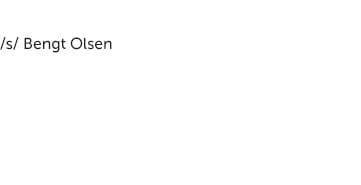

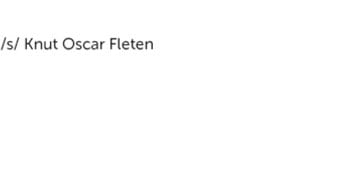

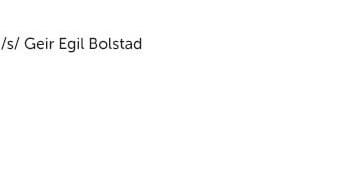
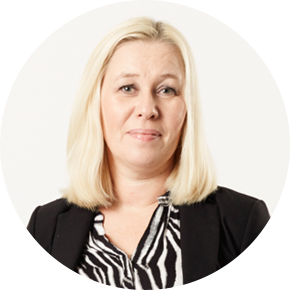
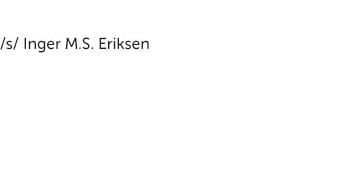

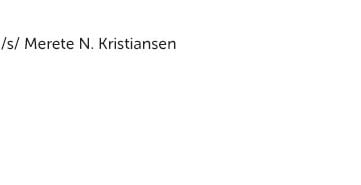

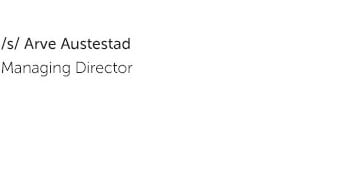
SpareBank 1 Boligkreditt AS
- Statement of the members of the board and the chief executive officer
The Board and the chief executive officer have today reviewed and approved the financial accounts for 2019 for SpareBank 1 Boligkreditt AS. The accounts have been prepared in accordance with the International Financial Reporting Standards (IFRS), as adopted by the EU.
To the best knowledge of the Board and the chief executive officer the accounts have been prepared in accordance with applicable accounting standards and give a true and fair view of the assets, liabilities, financial position and profit or loss of the Company taken as a whole as of 31.12.2019.
The Board of Directors and the chief executive officer declare to the best of their knowledge that the annual report gives a true and fair view of the development and performance of the business of the Company, as well as a description of the principal risks and uncertainties facing the Company.
Stavanger, February 4, 2020
The Board of Directors of SpareBank 1 Boligkreditt AS
